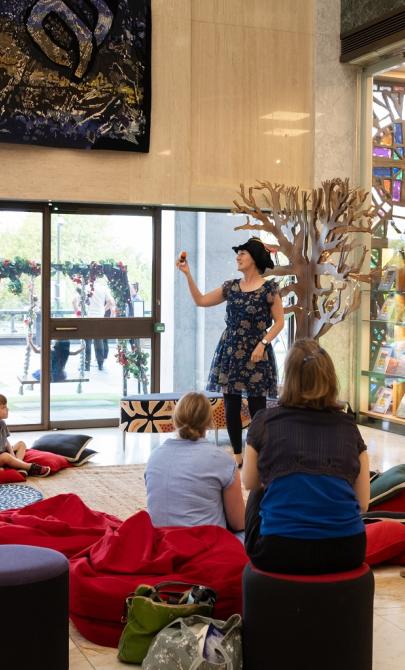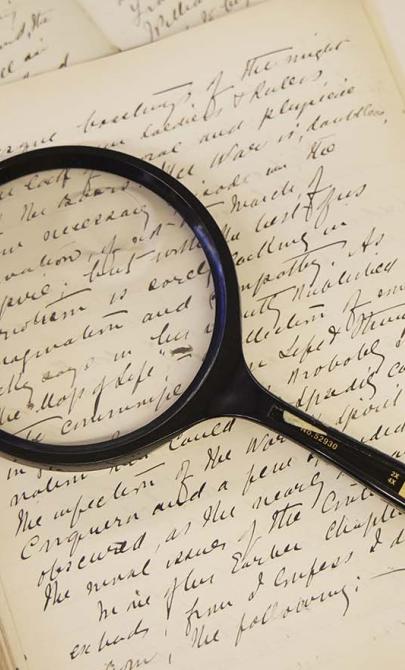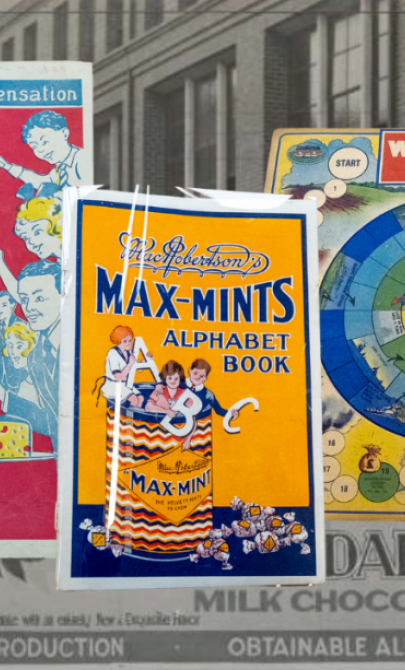The Sell: Australian Advertising 1790s to 1990s
About this module
Using an inquiry-based approach, this resource develops students' skills as writers, historians, and consumers of visual media by exploring the messages, meanings, and mechanics of advertisements. Featuring sources from the National Library of Australia’s collection, it examines what ads reveal about Australian life, culture, aspirations, and societal expectations over two centuries. Designed for flexibility, the resource includes introductory and concluding activities to help students engage with key concepts while catering to diverse classroom contexts and learning styles.
The Sell: Australian Advertising 1790s to 1990s gives us examples of some of the earliest ads in Australia.
The Sell: Australian Advertising 1790s to 1990s
Copyright for teachers
You can download all collection materials in this resource for education purposes. For more information, go to copyright for teachers.
Topics in this module
This module covers 5 key topics.
Each topic includes an introduction to key concepts, links to key resources in our collection and a series of learning activities that cater for a variety of classroom contexts and learning styles.

[Food industry - biscuits and cakes : trade catalogues ephemera collected by the National Library of Australia], nla.gov.au/nla.obj-84640628
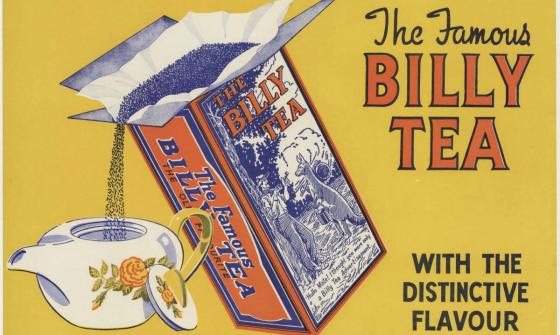
(1930). The famous Billy Tea : with the distinctive flavour, nla.gov.au/nla.obj-138235161

Simpson (Firm) (issuing body.) (1950). Hooray! It's washday! - my day off!. [Australia] Simpson
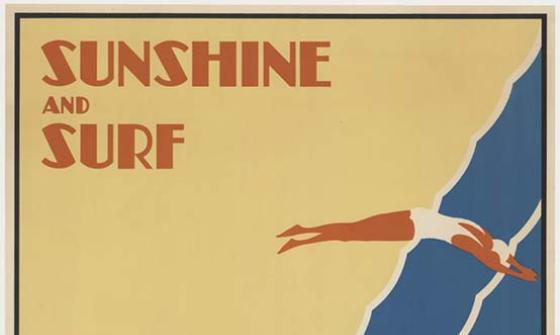
Gert Sellheim & Australian National Travel Association. (1936). Sunshine and surf : Australia, nla.gov.au/nla.cat-vn6385925
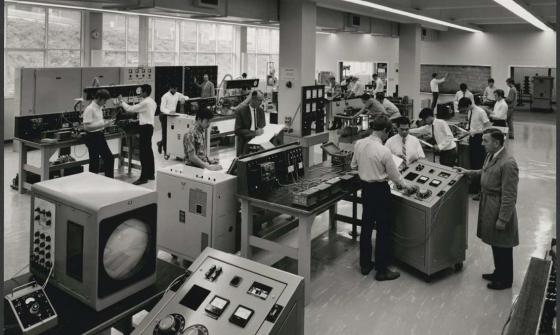
Wolfgang Sievers, Engineering faculty, interior with students, Royal Melbourne Institute of Technology 1969, nla.gov.au/nla.obj-161377160
Introductory activities
Advertising surrounds us, whether we like it or not. It aims to inform and influence how we live, what we buy and how we spend our leisure time. It may not reflect our reality, yet it can affect how we remember the past. Usually, it is designed to have an impact and then be forgotten, recycled or replaced.
By nature, advertising is a record of a moment, captured mid transaction, when someone has something to say or sell and uses words and/or images to get their message across. As a primary record of the past, advertising is also incredibly valuable. It is what people see or hear as they go about their lives.
This timeline gives an overview of the development of Australian advertising from the colonial period to the modern era.
Early Australian advertising borrowed heavily from European traditions—think playbills, newspapers, trade cards, and broadsides.
While a printing press arrived with the First Fleet, it wasn’t put to use until 1795. The earliest surviving Australian-printed document? An advertisement, of course about the early arts scene.
Technology and skilled workers shaped what could be produced in the colony, setting the stage for advertising’s evolution.
The gold rush of 1851 sparked a population boom, driving competition between businesses and the complexity of their ads. Melbourne surged ahead of Sydney as a commercial hub.
Advertising still relied on trade cards, newspapers, and ‘wanted’ posters, but images became more prominent—though mostly in monochrome.
A new nation, new rights, and a world at war—Australia’s first decades of federation saw sweeping social change, reflected in its advertising.
Women gained the vote in 1902, and by the 1910s, advertisers increasingly targeted them. Colour and bold imagery became more common, making ads more striking and persuasive.
The 1920s ushered in confidence—Australia promoted its products, its way of life, and itself. The government invested heavily in migration campaigns, while businesses marketed locally made goods, especially to women.
Even the Great Depression couldn't silence advertising. Fashion flourished, and some of Australia’s most iconic ad campaigns were born.
From wartime rationing to post-war prosperity, advertising in Australia found its voice.
By the 1950s and 60s, ads reflected—and reinforced—domestic ideals. Men were dependable providers; women, elegant and content. Consumer culture thrived, fueled by glamorous campaigns and celebrity endorsements. Travel was sold as an adventure, whether by train, car, or plane.
The 1970s brought a shift—ads became bolder, more experimental, and socially aware. As television dominated, jingles and catchphrases became cultural staples.
By the 1980s, Australian advertising was high-energy and fast-paced, embracing global influences. Big brands built loyalty through emotional storytelling, humour, and unforgettable slogans.
The 1990s saw the rise of technology and the internet, reshaping how ads reached audiences. Guerrilla marketing, sponsorships, and early digital campaigns signaled the beginning of a new era.
Activity 1: Exploring advertising’s impact
Begin by asking the class to define what advertising is. Encourage them to consider its purpose, the different forms it takes, and how it influences decisions.
Once students understand the concept of advertising, have them compare historical advertisements to modern ones.
- What are the similarities in messaging and techniques?
- How have advertisements evolved with technology and society?
- In what ways do advertisements shape our perception of history and culture?
Activity 2: The evolution of Australian advertising
Explain that advertising in Australia has changed significantly over time, from colonial-era newspaper ads to modern digital marketing campaigns.
Ask students to think of similar evolutions in other countries. For example, how did advertising develop in the United States, Britain, or Japan? What factors influenced these changes, such as technological advancements or cultural shifts?
Why do some advertising techniques persist across time, while others fade? Discuss the role of innovation in shaping how businesses communicate with consumers.
Activity 3: Advertising as historical evidence
Explain that advertisements are valuable historical records, reflecting social values, economic trends, and technological progress.
Ask why advertisements might be useful in studying history. What do they reveal about people’s priorities, aspirations, and daily lives? Consider how advertising reflects societal norms and expectations.
Have students research historical advertisements from different eras (for example, wartime propaganda, 1950s consumer culture, or modern influencer marketing).
Ask them to analyse the language and imagery used. What messages do these ads convey? How do they compare to contemporary advertising? This activity encourages students to think critically about the power of media in shaping public perception.
Concluding activities
Activity 4: The lasting influence of advertising
Advertising often reflects cultural trends and social change. Have students consider: If historical advertisements had never existed, how might our understanding of the past be different?
What aspects of advertising have influenced Australian culture today? Think about areas like language, design, consumer habits, or even national identity.
Activity 5: Advertising in popular media
Historical advertising themes often appear in films, television shows, and literature. Why do you think certain periods of advertising history are frequently depicted in popular media?
In Australia, we see advertising’s impact in various cultural references. What examples can students identify in Australian TV shows, films, or books? How do these portrayals influence our perception of the past?
Activity 6: Creative writing activity
Look closely at historical Australian advertisements from different eras.
Choose a character from an advertisement and imagine their life at the time the ad was created.
- What is their daily routine like?
- How does advertising influence their decisions?
- Do they believe in the message of the advertisement, or are they skeptical?
- How might they react to modern advertising trends?
Write a short story or diary entry from the perspective of this character, reflecting on how advertising has shaped their experiences and worldview.
Curriculum links
This resource aligns with the Australian Curriculum: English, History, and Visual Arts for Year 9 and 10 students.
The resource supports cross-curriculum priorities and encourages the development of analytical and evaluative skills through engagement with historical sources, media texts, and visual artworks. It also promotes critical thinking and interpretation across disciplines, with relevance to the General Capabilities of Literacy, Critical and Creative Thinking, Intercultural Understanding, and Personal and Social Capability.
- Understand how paragraphs and images can be arranged for different purposes, audiences, perspectives and stylistic effects (ACELA1567)
- Analyse and evaluate how people, cultures, places, events, objects and concepts are represented in texts, including media texts, through language, structural and/or visual choices (ACELY1749)
- Developments in technology, public health, longevity and standard of living during the twentieth century, and concern for the environment and sustainability (ACOKFH024)
- Evaluate how representations communicate artistic intentions in artworks they make and view to inform their future art-making (ACAVAR130)
- Analyse a range of visual artworks from contemporary and past times to explore differing viewpoints and enrich their visual art-making, starting with Australian artworks, including those of Aboriginal and Torres Strait Islander Peoples, and consider international artworks (ACAVAR131)
Acknowledgement
This resource has been generously supported by Optus. Through the Digital Thumbprint program and Kids Helpline @ School, Optus supports digital knowledge and the positive use of technology.
If you’d like to learn more about the Digital Thumbprint program, please visit the website or, if you’re interested in booking the program at your school, you can register your interest.



